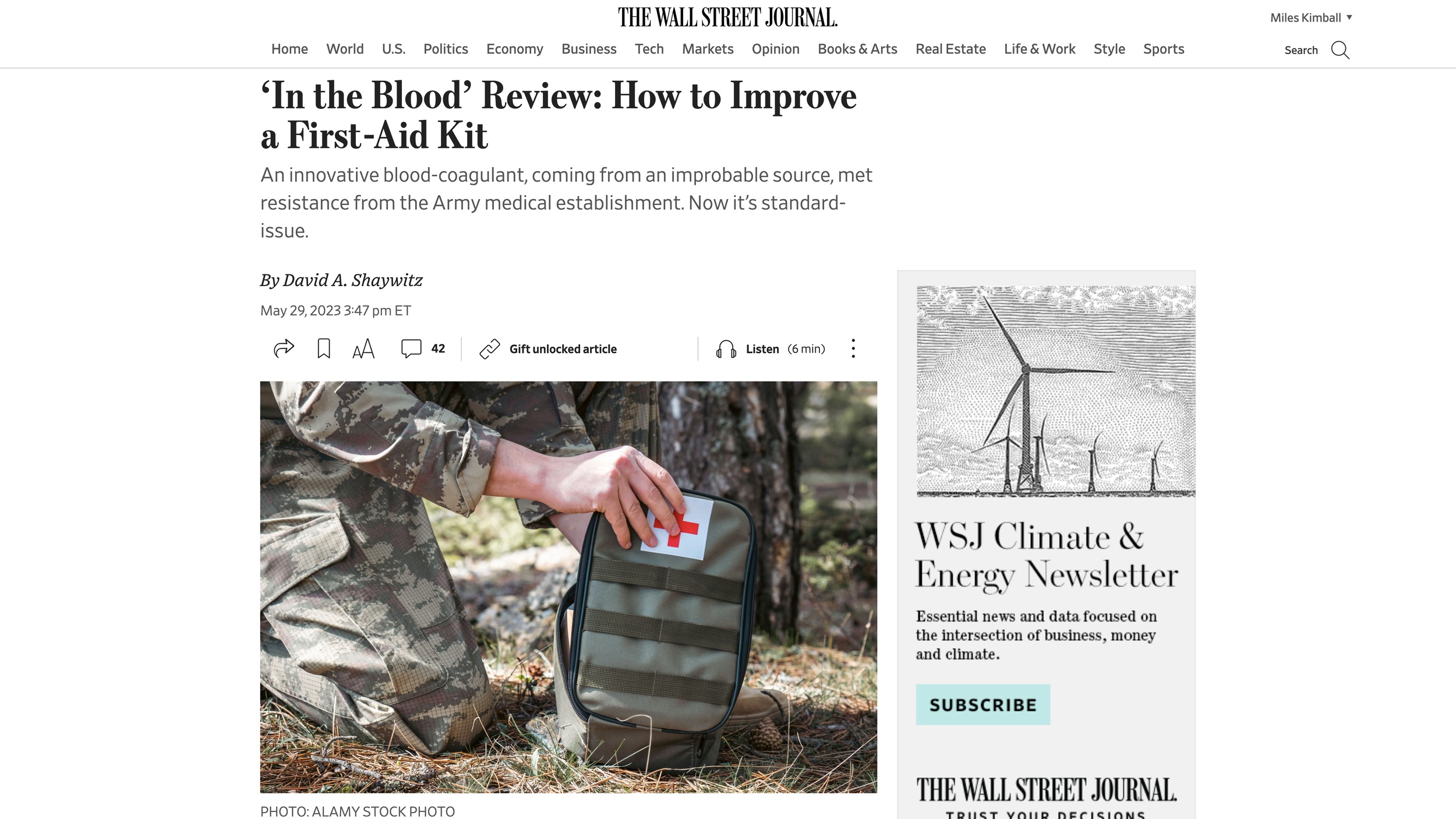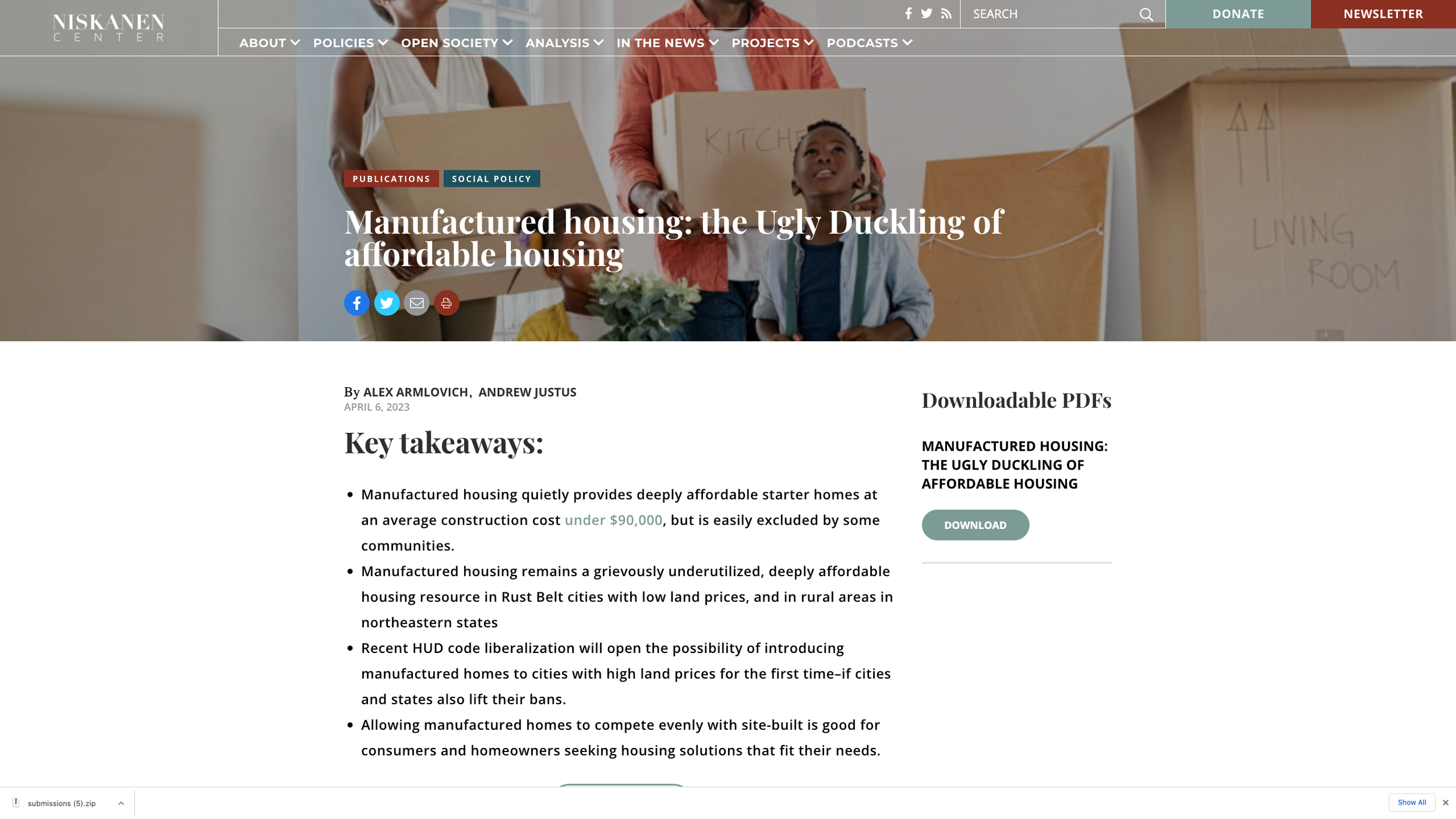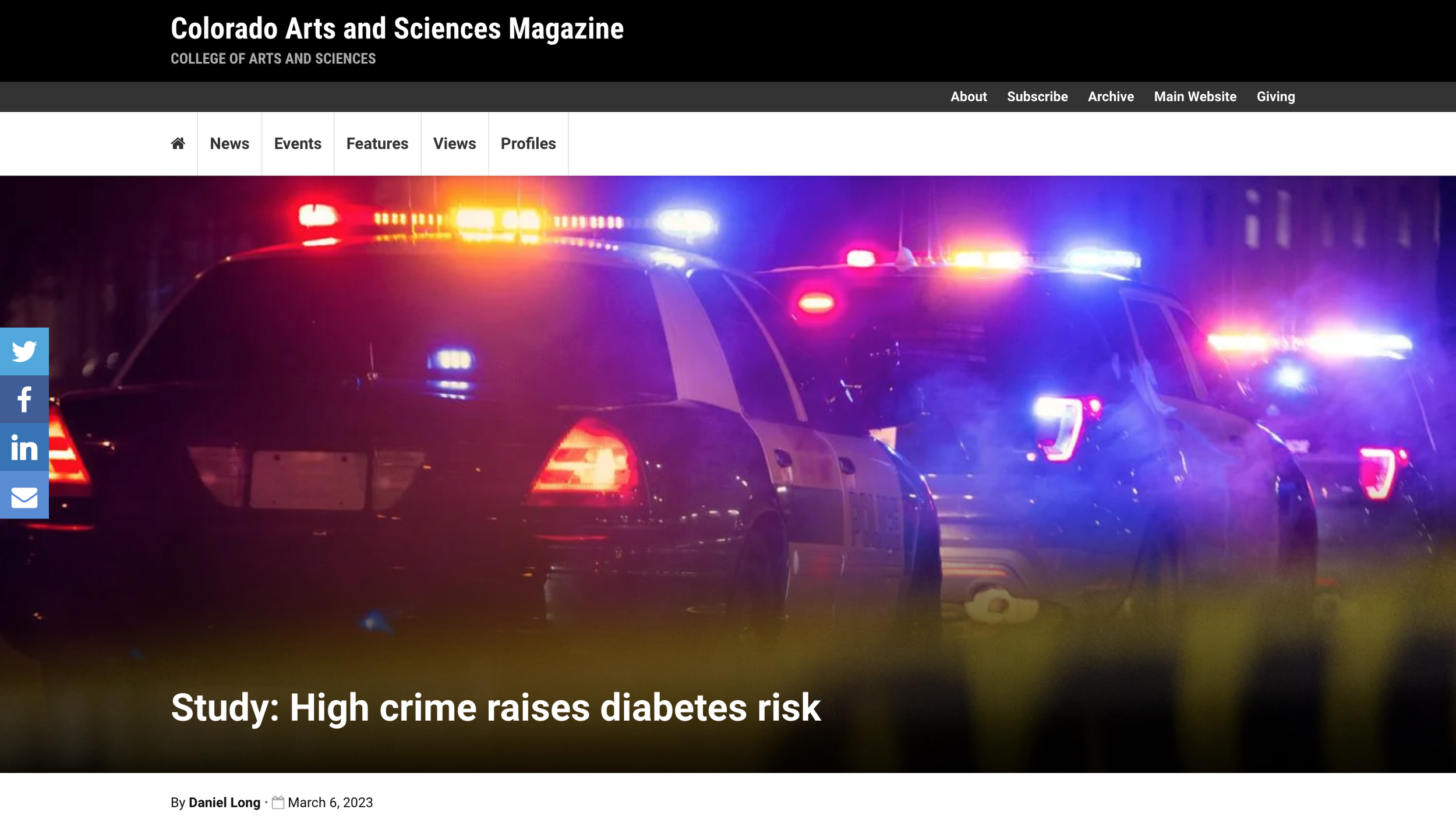Does Moderate Drinking Make People Less Stressed Out? →
This article is a counterpoint to these posts:
Zeolite Lessons
I liked David Shaywitz’s review of Charles Barber’s In the Blood for several reasons. First, there is some interesting physical chemistry. The reviewer David writes:
… zeolite … is composed of tiny caverns “in a series of endlessly repeating honeycomb patterns” that capture small molecules. Zeolite can help to separate nitrogen from oxygen since oxygen molecules pass through it more easily.
Second, this distillation of the book has an innovation story:
In 1983, as Mr. Hursey was thinking about those caverns, he found himself wondering if ground-up zeolite could treat an open wound by absorbing the liquid component of blood while leaving in place the components for clotting.
This idea worked!
Third, there is a story of misguided or corrupt resistance to this innovation, even after it had proven itself:
They ground up some zeolite, vacuum-sealed it with a food-storage device they picked up at Target, and sent it off to the competition. The product—which they called “QuikClot”—would outperform all comers, including the shrimp-based product that Dr. Holcomb and the Army had been developing.
Even with these results in hand, Messrs. Hursey and Gullong struggled for traction in the insular world of military contracting. …
Following a 1999 report conveying the successful use of a high-tech hemophilia drug to control bleeding in a wounded soldier, Dr. Holcomb and the Army pivoted to this approach. But it was pricey. Worse still, Factor Seven (as the drug was called) promoted coagulation systematically, potentially causing blood clots in unwanted places. An ethically dubious influence campaign by the manufacturer probably contributed to the product’s rapid adoption as well. In the end, concerns raised by Factor Seven clinical trials—along with a whistleblower lawsuit that culminated in a settlement with the Justice Department—damped interest, enabling QuikClot, at last, to win the day.
Finally, David draws an interesting set of conclusions:
The QuikClot story, so compellingly recounted by Mr. Barber, offers critical lessons about medical innovation: the importance of recognizing insights from nontraditional sources; the value of tinkering; the dismaying lengths to which incumbents often go to defend their turf; the fact that certitude, vital in some circumstances, can be detrimental in others. (A similar pattern can be seen in the determination of longitude in the 18th century, when a clockmaker figured it out ahead of resistant professional astronomers.)
Beyond that, David emphasizes the importance of persistence.
For me this all has resonance because stories of resistance to ideas that don’t come from the establishment are rife. Two examples I think of are the resistance to the Helicobacter pylori explanation for peptic ulcers and there is currently a lot of resistance to the idea that sugar in all its forms is much more unhealthy than dietary fat. I know of many other examples and am constantly on the lookout for more.
Oxygen Restriction Lengthens Lifespan in Mice →
This is an alternative explanation for better health outcomes at higher altitude to the “environmental contaminants run downhill and so are more intense at lower altitudes” explanation discussed in “Are Processed Food and Environmental Contaminants the Main Cause of the Rise of Obesity?”
A Lull
Sleepsong by Secret Garden
Today marks the 11th anniversary of the first post on this blog. I have written an anniversary post every year since then:
This past year has been a lull in my blogging. My research on well-being with Dan Benjamin, Ori Heffetz, Kristen Cooper and an able team of RAs (see “Pushing Aside GDP for a Measure of Human Well-Being Turns Out to be Very, Very Difficult. Ask Dan Benjamin”) has heated up, and in my personal life, a move from a suburb of Boulder into Boulder —and other similarly arduous but benign changes just as important—have taken up a lot of my time. I plan to write an autobiography as soon as I retire; I’ll give the full story then.
Despite not putting a high priority on blogging this past year after an intense decade of blogging before that, I count 26 posts, interviews or tweetstorms this past year that are substantial and not just a pointer to someone else’s work. Here they are, in reverse chronological order:
Posts Useful for Teaching (bibliographic post)
A Wide-Ranging and Thorough Interview of Miles by K. V. Krishna
Nominal Illusion: Are People Understanding Real Versus Nominal Interest Rates?
Donald Yacovone: How Ubiquitous History Textbooks Taught White Supremacy
Current Information Provision is Inadequate: Let's Put Salient Warnings on Alcoholic Beverages
A Linear Model for the Effects of Diet and Exercise on Health is a Big Advance over Popular Thinking
Mitra Kalita asks Miles Kimball, Cecilia Rouse and Daniel Zhou about the Coming Recession
What David Laibson and Andrei Shleifer are Teaching for Behavioral Economics—Jeffrey Ohl
Some Low-Hanging Fruit for Government Policy: Paying Benefits and Wages to Low-Income Folks Weekly
Price Stickiness Endangers Scientific Experiments Using Helium
Gradually Growing Sophistication in How Colleges are Evaluated
The Federalist Papers #55: How Big Should the House of Representatives Be?
Statistical interpretation and monetary policy are continuing themes. My favorite of all of these pieces is the Hexapodia podcast with Brad DeLong and Noah Smith.
Unfortunately, the next year looks very crowded for me as well. At some point, I hope to get out of the woods and then restart this blog on Substack.
Because Genes of a Child are Random Given the Genes of the Parents, It is a Lot Easier to Tell If Genes Cause Diabetes than to Tell If Crime Causes Diabetes
Note the title of the article above: high crime raises diabetes. My University of Colorado Boulder colleague Jason Boardman was more careful in his interpretation than his publicist. What the study actually shows is that genes associated with diabetes overall cause diabetes for people who live in high crime areas, but don’t clearly cause diabetes for people who don’t live in high crime areas.
Except for the issue of whether it is one’s own genes causing something or the corresponding genes in one’s parents (or less likely the same genes in one’s other relatives) causing something, the randomization of genes at conception makes it reasonably clear that when genes are correlated with something that the genes are causing that. In the future, when we have data with genes for father, mother and child, with the focus on what happens to the child, the evidence for genetic causes will be as strong as evidence from randomized controlled trials.
Of course, genes interact with the environment: they have different effects in different contexts. The causal chain from genes to outcomes that social scientists are interested in is typically a long one, so all kinds of things along the way modify what the ultimate effect of the genes is. Jason Boardman has very interesting evidence that genes that on average cause diabetes are doing most of their work by causing diabetes among people who live in high crime areas.
But this is NOT evidence that high crime causes diabetes. It is not even evidence that high crime causes diabetes among those who have a genetic vulnerability for high crime to cause diabetes. High crime might cause diabetes among those with a genetic vulnerability for such an effect; stress could be a causal pathway. But it is just as possible that other factors that tend to be associated with high crime in an area cause diabetes among those with a genetic vulnerability to such an effect. For example, places with high crime are often food deserts, in which it is much easier to find junk food than to find healthy food (such as nonstarchy vegetables—one of the few categories almost everyone agrees is healthy). And so the evidence may be showing that food deserts cause diabetes among those who are genetically vulnerable to such an effect.
There is an interesting possibility in which high crime could cause diabetes among those genetically vulnerable, not through stress but because high crime causes food deserts as storekeepers avoid high crime areas, and food deserts in turn cause diabetes. That is, even when it is fully legitimate to say that high crime causes diabetes among those genetically vulnerable, it might not be the causal chain that most easily comes to mind when one says that.
When looking for remedies, it matters what the causal chain is. If food deserts are an important part of the causal chain, the remedies one would look for would be different than if stress is the key part of the causal chain. So getting statistical interpretations right matters.
As a caveat, let me say that my discussion of statistical interpretation here is based only on information in the news article. The academic paper might have good counterarguments to the possibilities I raise. But if so, the journalist should have emphasized those counterarguments, since they seem crucial to backing up the title of the piece.


